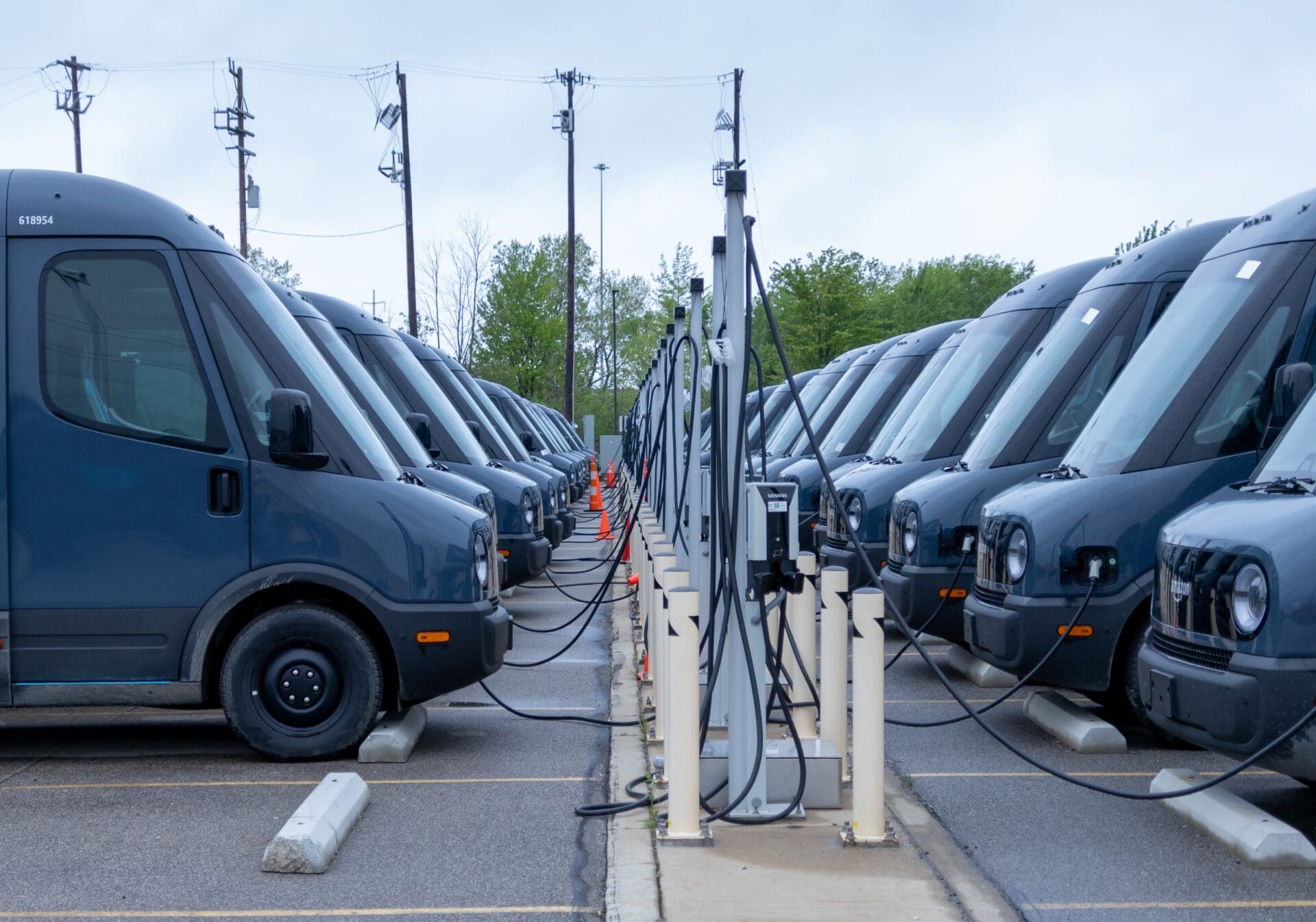
By Michael Miller, MN8 Distributed Energy Solutions
Fleet operators are increasingly at the forefront of the transition to electric vehicles, driven by a combination of regulatory pressure, sustainability targets, and compelling economic incentives. At MN8 Energy, we recognize this journey is complex, filled with both opportunities and challenges. Charging Up is our blog series exploring fleet electrification—covering the benefits, hurdles, and practical solutions MN8 provides to simplify this transition.
What Are Low Carbon Fuel Credits?
Low Carbon Fuel Standards (LCFS) programs are active in California, Washington, and Oregon, aiming to accelerate the adoption of low-carbon and carbon-negative fuels. These initiatives allow businesses to earn financial credits for using fuels with low or negative carbon intensity—like electric vehicle (EV) charging. Essentially, LCFS credits function as tradable assets – similar to Renewable Energy Certificates (RECs) – that reflect the environmental benefit of using cleaner fuels.
Fleets that own and operate EV charging infrastructure have a unique opportunity to turn their energy usage into a revenue stream. By leveraging the value of LCFS credits, fleet operators can significantly offset operating expenses, transforming what might seem like a cost center into a profit driver.
How LCFS Credit Monetization Works
The LCFS credit system is designed to address a key challenge faced by fleet operators: the economic feasibility of investing in charging infrastructure. Capital-intensive and complex to maintain, EV charging installations need steady revenue streams to justify deployment. The LCFS program not only provides a pathway to earn revenue but also strengthens the economic case for electrification.
There are two primary types of LCFS credits relevant to fleet operators:
- Throughput Credits: These credits are generated based on the amount of low-carbon or zero-carbon electricity dispensed into vehicles. Essentially, the more your fleet charges, the more credits you earn. This is a dynamic credit model tied directly to vehicle charging throughput.
- Capacity-Based FCI Credits: Unlike throughput credits, credits are earned simply for having the infrastructure in place, even if no electricity is dispensed. This provides a steady revenue stream, helping fleet operators manage financial risks associated with fluctuating charging demand.
Why Monetize LCFS Credits?
Monetizing LCFS credits addresses a fundamental problem of deploying costly EV infrastructure, how to improve its financial outlook. By turning energy usage and infrastructure investment into a continuous revenue stream, fleet operators and infrastructure developers can justify the upfront costs, creating projects that can be underwritten, and at a macro level strengthen the business case for electrification. In short, by leveraging both throughput and capacity credits, fleets can achieve a more resilient financial model.
The Complexity of Monetizing LCFS Credits
Generating revenue from LCFS credits isn’t as simple as just plugging in vehicles. The process involves asset registration, ongoing data reporting, compliance with strict regulatory standards, credit aggregation, brokering, and matching with buyers. This can be time-consuming and complex—particularly for operators who lack in-house expertise.
How MN8 Simplifies LCFS Credit Management
MN8 Energy offers comprehensive LCFS credit management services that remove the complexity from the process. Our team handles everything from enrollment and compliance reporting to credit aggregation and monetization. Here’s how we make it seamless:
- Program Enrollment: We establish LRT-CBTS and AFP accounts, register fueling supply equipment (FSE), and ensure all necessary documentation is in place.
- Ongoing Compliance: We collect, validate, and report electricity dispensing data, maintaining full compliance with LCFS requirements.
- Credit Monetization: Our internal trading team aggregates credits across our portfolio, brokers them to maximize value, and disburses funds directly to you.
- Enhanced Credit Value: We also provide Renewable Energy Certificates (RECs) to ensure your charging electricity qualifies as zero-carbon, boosting the amount of credits your site generates.
The MN8 Advantage
The real advantage of partnering with MN8 lies in our expertise and capacity to manage the entire credit life cycle efficiently. Our dedicated energy management & trading team has a proven track record, managing credits from our large renewable energy portfolio.
By outsourcing credit management to MN8, fleets gain access to a streamlined process that guarantees compliance, optimizes revenue potential, and frees up internal resources to focus on core operations.
Ready to Monetize Your Charging Infrastructure?
If you’re looking to convert your charging infrastructure into a revenue-generating asset, reach out to MN8 Energy’s Distributed Energy Solutions team at DES@mn8energy.com. Our experts are ready to streamline the process, ensuring compliance and maximizing your credit value.
Stay tuned for more insights on fleet electrification and charging optimization in our ongoing series, Charging Up!